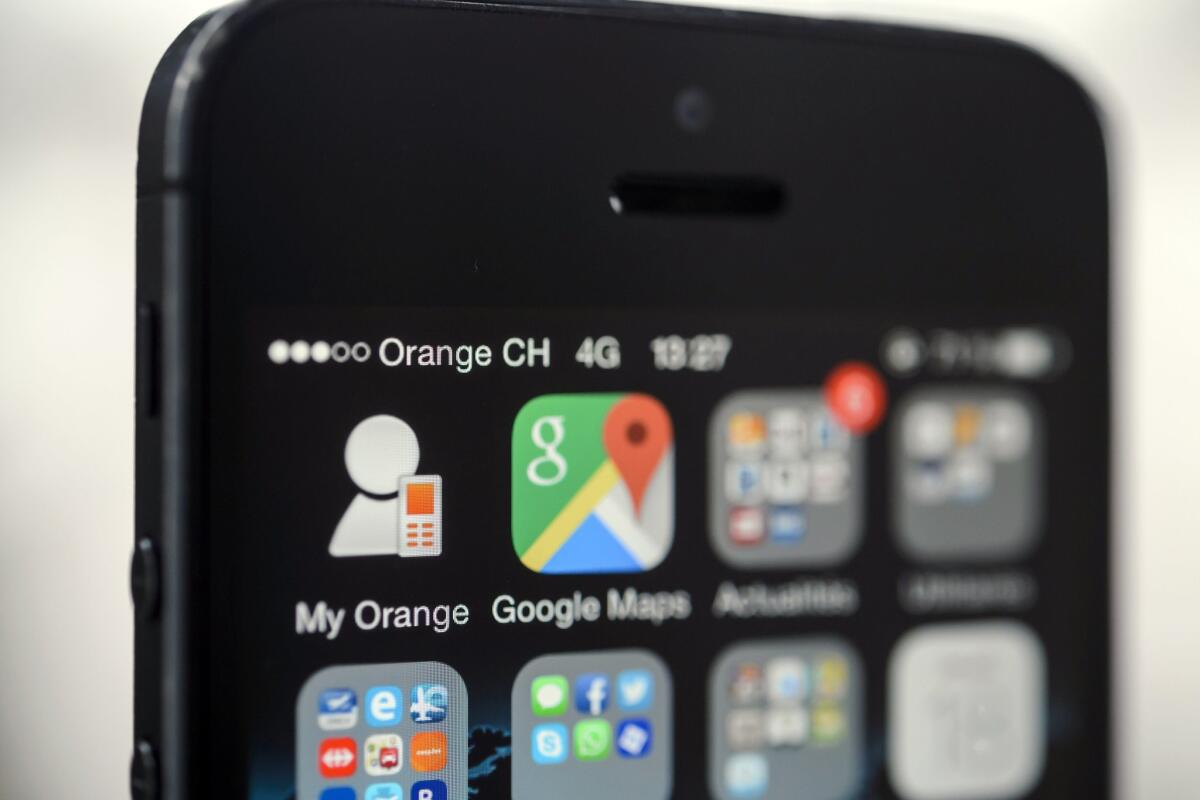Does smartphone use smarten up the brain?

- Share via
Using a smartphone won’t make you smarter, overall, but it does leave a strong mark on the part of your brain that processes touch, according to a new study.
Swiss researchers were curious about the digital effect on the digits that swipe and poke electronic devices. Would they be similar to, say, a violin player’s unusual pinky sensitivity?
It turns out that all that typing with your thumb and swiping with your index and middle fingers may be training the brain’s somatosensory cortex, which processes touch, according to the study published online Tuesday in the journal Current Biology.
Brain activity in the somatosensory cortex was stronger when smartphone users did a lot of typing and swiping, and that signal strength depended on how recently such digital activity occurred, the study found.
The findings don’t offer a major breakthrough for brain science, per se, but they do represent a clever way to track how the brain adapts during daily activity, said University of Zurich neuroscientist Arko Ghosh, lead investigator of the study.
“People should be comforted by the fact that our daily lives are interesting to neuroscientists,” Ghosh said. “We have always studied pianists or athletes and such, but smartphones are going to allow us to start linking our digital footprints to brain activity.”
The researchers downloaded 10 days of activity from 26 touch screen users and 11 others who still fumble around with old cellphones (all were right-handed). Then they stimulated the users’ thumbs, index and middle fingers 1,250 times while the subjects were hooked up to an electroencephalogram (EEG), which measures voltage changes from brain activity.
Here’s what they found: there was increased touch-related cortical activity among the smartphone users, compared with those who did not use touch-screen technology. The strength of those changes was directly related to how much the screens were used and to how recently they were swiped, the study found.
The thumb showed the strongest response, but there were significant effects on the index and middle fingers, according to the study.
“The closer they were to their peak usage, in time, the more brain activity they had associated with their thumb,” Ghosh said.
The data showed no relationship between those brain signals and such factors as how long people had been using the devices, nor their age when they got their first smartphone, according to the study.
Neuroscientists have long been interested in measuring the way the brain adapts to experience. But most studies look at longer-term changes, known as plasticity, and don’t track them across the small details of life. It is one thing to know how a piano player’s brain differs from that of a non-musician’s, quite another to correlate changes while playing one piece, Ghosh noted.
Smartphones and other devices could let scientists do exactly that, and with more sensations than touch, Ghosh said.
“We really can now start tackling questions about the implementation of plasticity through our daily life,” he said. “We can start extracting which factors matter for the brain, which don’t, what are the drivers of plasticity and what are not? To do this, connecting our digital footprints to brain activity is what we need to do.”
Exercise your fingers and your brain. Follow me on Twitter: @LATsciguy




